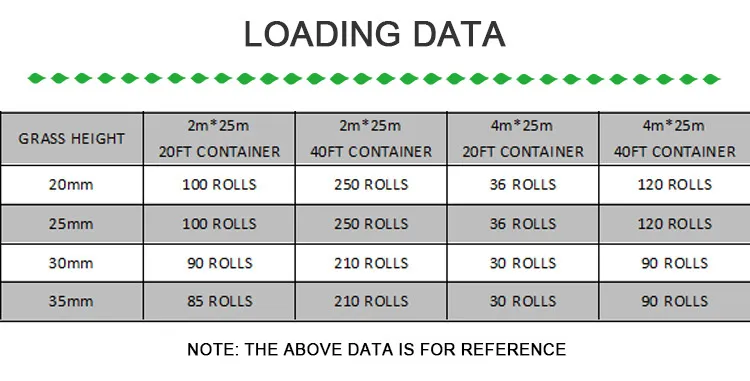
- Afrikaans
- Arabic
- Belarusian
- Bengali
- Czech
- Danish
- Dutch
- English
- Esperanto
- Estonian
- Finnish
- French
- German
- Greek
- Hindi
- Hungarian
- Icelandic
- Indonesian
- irish
- Italian
- Japanese
- kazakh
- Rwandese
- Korean
- Kyrgyz
- Lao
- Latin
- Latvian
- Malay
- Mongolian
- Myanmar
- Norwegian
- Persian
- Polish
- Portuguese
- Romanian
- Russian
- Serbian
- Spanish
- Swedish
- Tagalog
- Tajik
- Thai
- Turkish
- Turkmen
- Ukrainian
- Urdu
- Uighur
- Uzbek
- Vietnamese
turf soccer field cost
Dec . 11, 2024 22:37 Back to list
The Cost of Turf Soccer Fields A Comprehensive Overview
Soccer, as one of the most popular sports globally, has seen a significant increase in participation and viewership over the years. As communities and organizations invest in better facilities to support the sport, the construction of turf soccer fields has become a common choice. However, understanding the cost involved in creating and maintaining these fields is crucial for making sound financial decisions.
Initial Construction Costs
The initial cost of installing a turf soccer field is generally more than that of a natural grass field. On average, a high-quality artificial turf field can range from $700,000 to over $1 million, depending on various factors such as location, field size, and the type of turf selected. The field's size is the most significant determinant, with standard dimensions for a soccer field being about 110-120 yards long and 74-76 yards wide.
In addition to the turf material itself, other expenses include site preparation, drainage systems, infill materials, and installation labor. Site preparation may entail grading the land, installing proper drainage to prevent water retention, and laying a solid foundation, all of which can contribute significantly to the overall cost. Proper drainage is vital to maintain the longevity and usability of the field, ensuring that it remains playable in various weather conditions.
Type of Turf and Materials
The type of artificial turf selected also plays a crucial role in determining the overall cost. There are several options available, including nylon, polyethylene, and polypropylene fibers, each with varying lifespans, durability, and price points. High-quality nylon turf, for instance, is more expensive but offers greater resilience and a longer lifespan compared to other types. Infill materials such as crumb rubber or organic alternatives also add to the expense but are essential for ensuring player safety and improving field performance.
Maintenance Costs
turf soccer field cost

While turf fields require less maintenance than natural grass fields, they are not maintenance-free. The average annual maintenance cost for a turf soccer field ranges from $15,000 to $30,000, depending on usage and environmental factors. Regular maintenance includes grooming, cleaning, and periodic inspections to address any wear and tear.
Regular grooming is essential for maintaining the appearance and performance of the field. This process helps to redistribute infill material, stand the grass fibers upright, and prevent compaction. Cleaning the surface to remove debris, dirt, and algae growth is also paramount, as buildup can negatively affect player safety and performance.
Longevity and Lifecycle Costs
Artificial turf fields are designed to last between 8 to 15 years, depending on usage frequency and maintenance practices. Over time, the initial investment can be offset by reduced maintenance costs and the ability to use the field year-round in various weather conditions. This durability is particularly beneficial in regions with harsh climates where natural grass may struggle to thrive.
When considering the lifecycle costs of turf fields, it’s important to factor in eventual replacement costs. After a decade or more of usage, fields may require resurfacing or full replacement, which can add to the overall financial considerations that organizations must prepare for.
Conclusion
Investing in a turf soccer field offers numerous advantages for communities, schools, and recreational organizations, including increased playability and lower maintenance demands. However, it is essential to account for initial construction costs, the type of materials used, routine maintenance expenses, and eventual replacement needs when making this investment. Understanding these factors allows stakeholders to make informed decisions that align with their financial capabilities while promoting the sport of soccer within their communities. By analyzing both the short-term and long-term implications, organizations can ensure that their turf field meets the needs of players and administrators alike.
-
The Benefits of Artificial Turf for Indoors
NewsJul.15,2025
-
How Artificial Grass Suppliers Ensure Quality Products
NewsJul.15,2025
-
Artificial Grass and Pets: A Space for Relaxation
NewsJul.08,2025
-
Balcony & Outdoor Decoration with Artificial Grass
NewsJul.08,2025
-
Best Indoor Artificial Grass for Home
NewsJul.07,2025
-
Best Pet Turf for Dogs: Safe & Durable Artificial Grass Options
NewsJul.07,2025
Products categories









